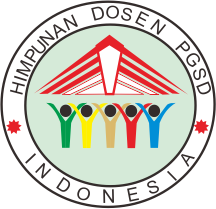LINGUISTIC STRATEGIES IN AMERICAN COMEDY VIDEOS BY TAYLOR TOMLINSON ON YOUTUBE: A CONTENT ANALYSIS OF LINGUISTIC COMEDY TECHNIQUES
Keywords:
comedy, YouTube, Linguistic Strategies, Language and Culture, Taylor Tomlinson, Digital MediaAbstract
This study investigates the evolving role of comedy in American culture, particularly through the lens of digital platforms like YouTube, where comedians such as Taylor Tomlinson have emerged as influential voices. Comedy not only serves as entertainment but also acts as a form of social commentary, providing a brief respite from authority and societal pressures. The research focuses on the linguistic strategies employed by Tomlinson in her videos, such as wordplay, irony, sarcasm, exaggeration, incongruity, satire, and also metaphor. With qualitative content analysis, the study reveals how these linguistic strategies shape her comedic narratives and enhance audience engagement. The findings contribute to our understanding of the interplay between language and culture in online comedy, offering valuable insights for content creators, educators, and researchers. As the digital media landscape evolves, grasping the linguistic nuances that foster humor remains essential for effective audience connection.Downloads
References
Attardo, Salvatore, Jodi Eisterhold, Jennifer Hay, and Isabella Poggi. 2003. “Multimodal Markers of Irony and Sarcasm.” Humor 16(2):243–44. doi: 10.1515/humr.2003.012.
Charles, Knight. A. 1992. “Satire, Speech, and Genre.” Comparative Literature 44(1):25.
Clark, Michael. 1970. “Humour and Incongruity.” Philosophy 45(171):25. doi: 10.1017/S003181910000958X.
Eleanor, Hutchens. 1960. “The Identification of Irony.” English Literary History 27(4):352.
Feibleman, James. 1938. “The Meaning of Comedy.” Journal of Philosophy, Inc. 35(16):422–23.
Kennard, L. R. 1997. “Coleridge, Wordplay, and Dream.” Association for the Study of Dreams 7(2):99–100.
Kim, Jin. 2012. “The Institutionalization of Youtube: From User-Generated Content to Professionally Generated Content.” Media, Culture and Society 34(1):53–67. doi: 10.1177/0163443711427199.
Lynch, Tony. 2001. “Seeing What They Meant: Transcribing as a Route to Noticing.” ELT Journal 55(2):131–33. doi: 10.1093/elt/55.2.124.
Mayring, Philipp. 2014. Qualitative Content Theoretical Foundation, Basic Procedures and Software Solution.
Murray, Knowles, and Moon Rosamund. 2006. Introducing Metaphor.
Obasi, Jane C., and Omotosho Melafa. 2022. “Stylistic Analysis of Comic Language Strategies and Techniques in Selected Comedy Skits.” Nsukka Journal of the Humanities 30(2):76. doi: 10.62250/nsuk.2022.30.2.71-88.
Sherzer, Joel. 1996. “Linguistic Theories of Comedy.” Linguistic Society of America 72(1):133–34. doi: 10.2307/4341113.
Downloads
Published
Issue
Section
License
Copyright (c) 2024 Pendas : Jurnal Ilmiah Pendidikan Dasar

This work is licensed under a Creative Commons Attribution 4.0 International License.



















